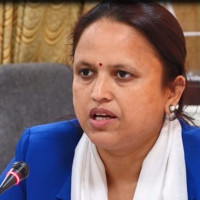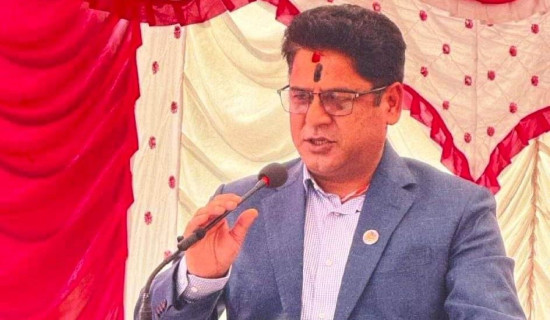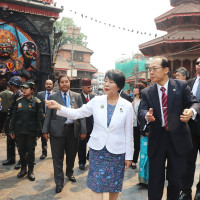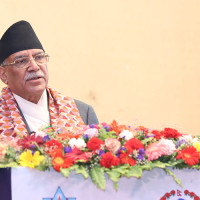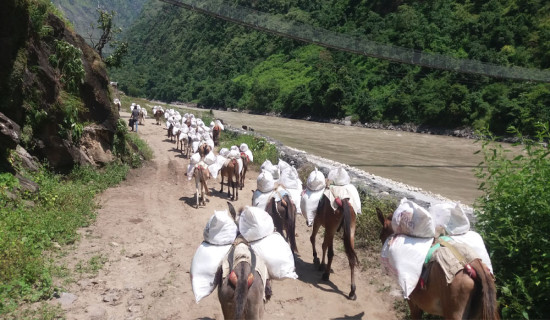- Sunday, 5 May 2024
Amargadhi Fort’s historic armory vanishing
By Pushkar Bhandari,Dadeldhura, Apr. 26: Perched atop the cliff of the district headquarters Khalanga, lies the historical fort of Amargadhi, resembling an eternal sentinel. The fort’s shape looks like the head of a lion. Situated in Amargadhi Municipality-5, the fort stands at an elevation of 6,500 feet. Constructed with a combination of stones and wood, the fort’s structure resembles a lion’s mane, echoing tales of valour and war from the past.
Dating back to the era of King Rana Bahadur Shah in 1847, during the unification campaign of Nepal, the region witnessed fierce battles between the Doti Kingdom and the Gorkha soldiers. Led by Captain Ranabir Khatri, soldiers from 10 companies fought with the forces of Doti in Naridang, marking a significant chapter in history.
Following the victory of the Gorkhali forces led by Rana Bahadur Shah over the Doteli force, the region saw the establishment of strong governance under the leadership of Badakaji Amar Singh Thapa.
Under Thapa’s administration, efforts were made to extend the unification campaign of the Shah kingdom’s influence across the Mahakali River up to western Kangada initiating the victory campaign.
The construction of the Amargadhi Fort was undertaken during the period and supervision of military commanders like Amar Singh Thapa, Kaji Jagat Pandey, Captain Golaiya, Captain Ranabir Khatri, Subba Joga Narayan Malla, Subba Fauda Singh and Sugbir Khatri.
Despite its historical significance since the 18th century, the fort has gradually deteriorated over the centuries.
The historical Amargadhi Fort of Sudurpaschim Province is also in the limelight in different political activities. At the entrance of the Amargadhi Fort in Dadeldhura, the birthplace of martyr Bhimdutta Panta lies the statue of Badakaji Amar Singh Thapa with his axiom, “I am a cub of a tiger; don’t mistake me with a carcass eating dog.”
However, recent discussions about the fort have reignited interest, particularly regarding the mysterious disappearance of numerous weapons and five cannons during the battles against the British Empire during the unification campaign.
The fort is devoid of its traditional artillery. Despite being a symbol of Nepal’s unification efforts, the fort’s importance seems to have waned over time. Locals accuse government authorities of neglecting the preservation of the site and failing to conduct thorough investigations into the missing weapons, cannons and artilleries.
Dev Bhandari, 82, a resident who served in the fort during the Panchayat era, recalled the presence of five cannons, around 50 rifles, and a dozen Bhimsen-nal guns within the fort’s confinement. At Tudikhel, near the fort, on the west side, cannons were fired on the occasion of Fulpati Badai, during Bada Dashain, said Thapa.
The locals said that the importance of the fort has also decreased today as the historical weapons and military uniforms including cannons, guns, and homemade spears used during the fight are no longer there. While the fort once stood as a symbol of military might and strategic significance during the unification era, its current state reflects a neglect of historical preservation, said the locals.
Efforts by the local municipality to revitalise tourism have been met with challenges, including restrictions on photography and videography within the premises.
As debates continue regarding the fort’s historical legacy, the Amargadhi Fort stands as a testament to Nepal’s rich history, awaiting further exploration and preservation by future generations.
Amargadhi Municipality has been given the responsibility of maintaining and operating the fort since December 2009 after repeated efforts of residents.





